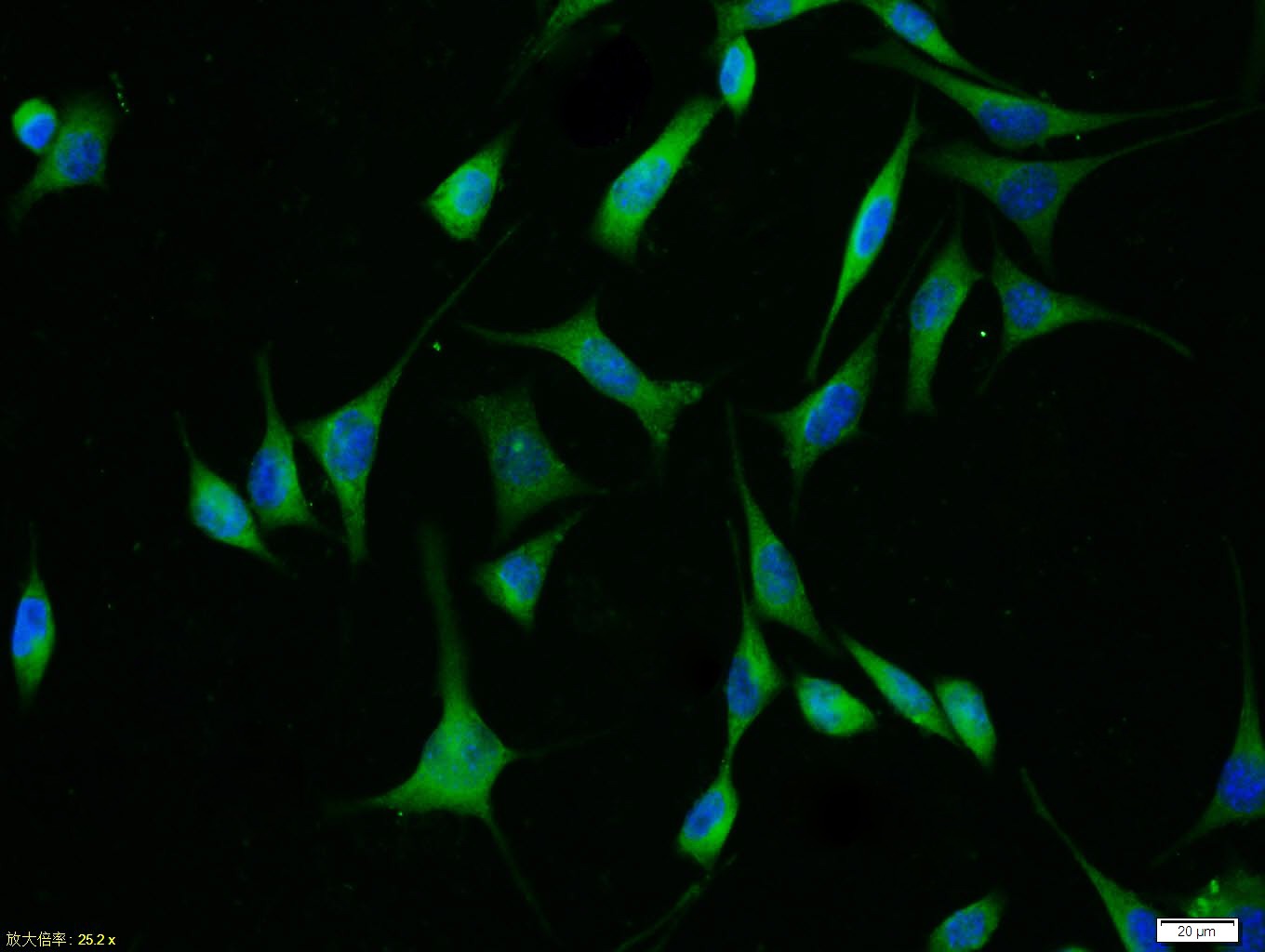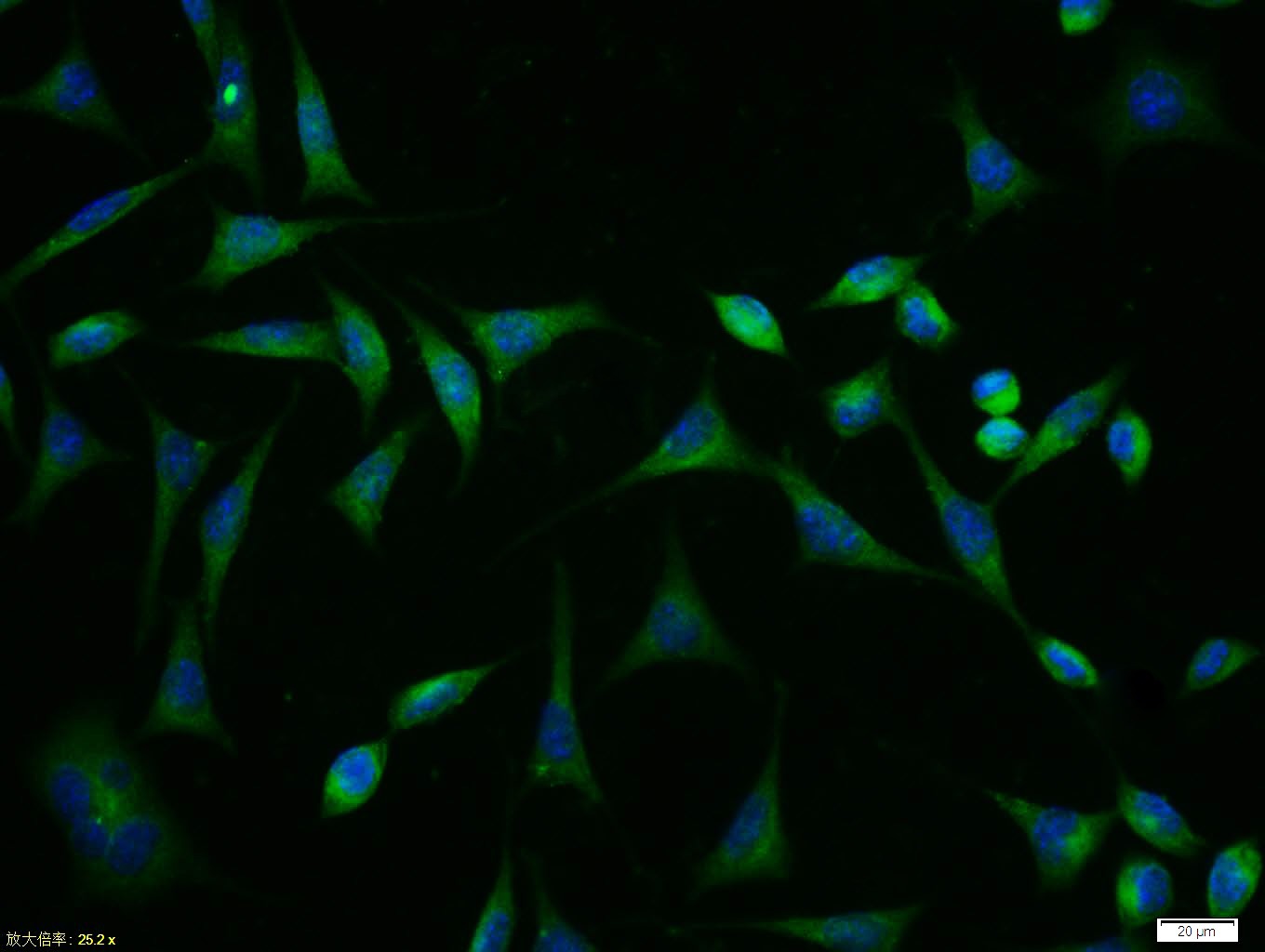Shopping Cart
Remove All Your shopping cart is currently empty
Your shopping cart is currently empty
Anti-ABCB1 Polyclonal Antibody 2 is a Rabbit antibody targeting ABCB1. Anti-ABCB1 Polyclonal Antibody 2 can be used in FCM,ICC/IF,WB.
| Pack Size | Price | USA Warehouse | Global Warehouse | Quantity |
|---|---|---|---|---|
| 50 μL | $221 | 7-10 days | 7-10 days | |
| 100 μL | $374 | 7-10 days | 7-10 days | |
| 200 μL | $529 | 7-10 days | 7-10 days |
| Description | Anti-ABCB1 Polyclonal Antibody 2 is a Rabbit antibody targeting ABCB1. Anti-ABCB1 Polyclonal Antibody 2 can be used in FCM,ICC/IF,WB. |
| Synonyms | Phospholipid transporter ABCB1, PGY1, P-glycoprotein 1, Multidrug resistance protein 1, MDR1, CD243, ATP-dependent translocase ABCB1, ATP-binding cassette sub-family B member 1, ABCB1 |
| Ig Type | IgG |
| Reactivity | Human,Mouse,Rat |
| Verified Activity | 1. Blank control (blue line): Hela (blue). Primary Antibody (green line): Rabbit Anti-MDR1 antibody (TMAB-00022) Dilution: 1 μg/10^6 cells; Isotype Control Antibody (orange line): Rabbit IgG. Secondary Antibody (white blue line): Goat anti-rabbit IgG-FITC Dilution: 1 μg/test. Protocol The cells were fixed with 70% methanol (Overnight at-20°C) and then permeabilized with ice-cold 90% methanol for 30 min on ice. Cells stained with Primary Antibody for 30 min at room temperature. The cells were then incubated in 1 X PBS/2% BSA/10% goat serum to block non-specific protein-protein interactions followed by the antibody for 15 min at room temperature. The secondary antibody used for 40 min at room temperature. 2. Sample: liver (Rat) Lysate at 40 μg Primary: Anti-MDR1/P Glycoprotein (TMAB-00022) at 1/300 dilution Secondary: IRDye800CW Goat Anti-Rabbit IgG at 1/20000 dilution Predicted band size: 141 kDa Observed band size: 141 kDa 3. Tissue/cell: SH-SY5Y cell; 4% Paraformaldehyde-fixed; Triton X-100 at room temperature for 20 min; Blocking buffer (normal goat serum) at 37°C for 20 min; Antibody incubation with (MDR1/P Glycoprotein) polyclonal Antibody, Unconjugated (TMAB-00022) 1:100, 90 minutes at 37°C; followed by a FITC conjugated Goat Anti-Rabbit IgG antibody at 37°C for 90 minutes, DAPI (blue) was used to stain the cell nucleus. 4. Tissue/cell: SH-SY5Y cell; 4% Paraformaldehyde-fixed; Triton X-100 at room temperature for 20 min; Blocking buffer (normal goat serum) at 37°C for 20 min; Antibody incubation with (MDR1/P Glycoprotein) polyclonal Antibody, Unconjugated (TMAB-00022) 1:100, 90 minutes at 37°C; followed by a FITC conjugated Goat Anti-Rabbit IgG antibody at 37°C for 90 minutes, DAPI (blue) was used to stain the cell nucleus.     |
| Application | |
| Recommended Dose | WB: 1:500-2000; ICC/IF: 1:100; FCM: 1μg/Test |
| Antibody Type | Polyclonal |
| Host Species | Rabbit |
| Subcellular Localization | Cell membrane; Multi-pass membrane protein. |
| Tissue Specificity | Expressed in liver, kidney, small intestine and brain. |
| Construction | Polyclonal Antibody |
| Purification | Protein A purified |
| Appearance | Liquid |
| Formulation | 0.01M TBS (pH7.4) with 1% BSA, 0.02% Proclin300 and 50% Glycerol. |
| Concentration | 1 mg/mL |
| Research Background | P Glycoprotein, the product of the MDR1 gene, is expressed in distinct non-malignant cells, typically cells with secretory and excretory functions. It is assumed to function as an ATP-dependent drug efflux pump with broad substrate specificity. The highest expression of P Glycoprotein has been observed in kidney (proximal tubules), liver (bile canaliculi), adrenal gland and intestine, suggesting that the primary role of P Glycoprotein is in the normal secretion of physiological metabolites and ingested chemicals into bile, urine and the lumen of the intestinal tract. Elevated levels of P Glycoprotein have also been reported in multidrug-resistant cell lines and in colon, endometrial, ovarian, and breast tumors, as well as in sarcomas and leukemias / lymphomas. |
| Immunogen | KLH conjugated synthetic peptide: human MDR1 |
| Antigen Species | Human |
| Gene Name | ABCB1 |
| Gene ID | |
| Protein Name | ATP-dependent translocase ABCB1 |
| Uniprot ID | |
| Biology Area | P glycoproteins,ATPases,Channels,Side Population,Surface Molecules |
| Function | Energy-dependent efflux pump responsible for decreased drug accumulation in multidrug-resistant cells. Subunit : Interacts with PSMB5. |
| Molecular Weight | Theoretical: 141 kDa. |
| Stability & Storage | Store at -20°C or -80°C for 12 months. Avoid repeated freeze-thaw cycles. |
| Transport | Shipping with blue ice. |
| Size | Quantity | Unit Price | Amount | Operation |
|---|

Copyright © 2015-2025 TargetMol Chemicals Inc. All Rights Reserved.